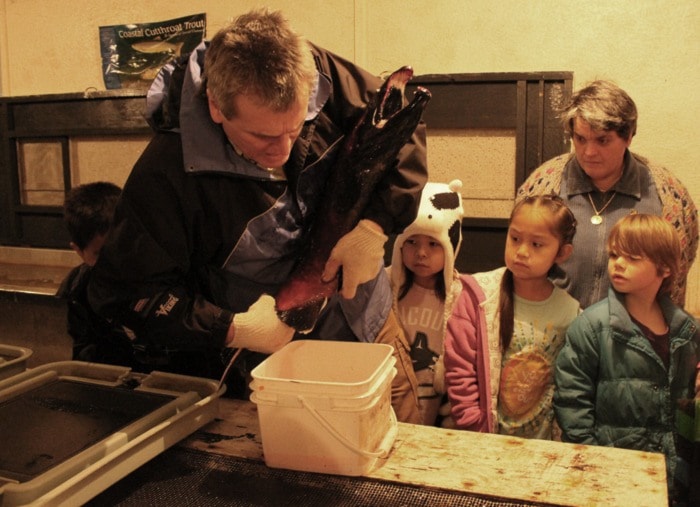Grade 1 and 2 students at Palsson Elementary will be keeping a close eye on salmon eggs this winter.
It is a project that their teacher, Kim Walters, has involved her students with through the local salmon hatchery in Lake Cowichan for six years.
On Dec. 14, Bob Crandall, president of the Cowichan Lake Salmonid Enhancement Society (CLSES), came to the school and talked to the children about what happens in the life cycle of salmon. Then he accompanied the class to the hatchery so that they could see first-hand the different steps that were just explained to them.
The children saw the incubation trays in a dimly lit room where eggs are already maturing. In one of two troughs in the larger space, they saw the female salmon (does) that are waiting to lay their eggs, while the male salmon, or bucks, were swimming in a second trough.
Then Crandall and CLSES volunteer Kevin Lowe showed the children how they remove the eggs from a female salmon into a bucket, and fertilize the eggs with milt. The eggs that the children helped fertilize will remain in the hatchery until February, when Crandall will bring them to their classroom for the next part of the project.
“I was very pleased with our trip to the hatchery,” Walters said. “The children really enjoyed watching the eggs being taken and helping mix the milt. They are excited that these eggs will eventually come back to our classroom.”
In the classroom, the eggs float in a small tray at the top of the tank until they hatch out. At this stage they are called alevins and they feed (or absorb) on their yolk sac. The children help feed them once the yolk sac is buttoned up and the fry swim up to the top of the tank.
“We do this for about two weeks and then release them into the creek,” she explained. “We try to tie it into Earth day if we can.”
From this project, the children learn about life cycles in science and First Nations customs in social studies.
